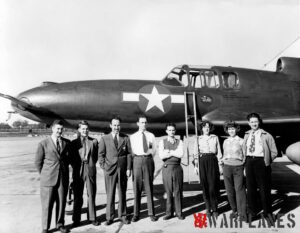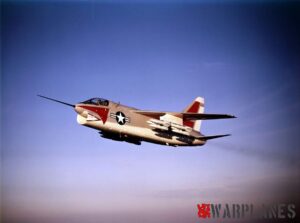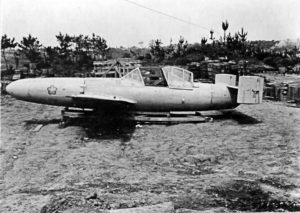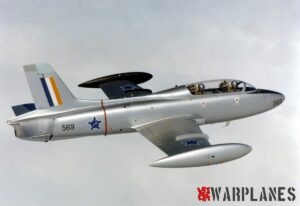Harrier
The “Jump Jet” has arrived
Classed as the first operational close-support fighter/reconnaissance aircraft with vertical take-off capabilities, the Hawker Siddeley Harrier or sometimes better known as the “Jump Jet” came to the eyes of the world in the 1960s.
Design on the vertical take-off aircraft started in the late 1950s with Stanley Hooker, Sir Sydney Camm and Ralph Hooper bring to life the Hawker Siddeley P.1127.

Even at the start of the project, Hawker was without official backing from the then British Ministry of Supply for its prototype aircraft so work started as a private venture. During this period Hawker were also heavily occupied with submissions for the replacement of the RAF Canberra fleet. Of note, was this was awarded to BAC for the ill-fated TSR 2 project.
The first prototype of the P.1127 XP831 (above) was ready for trails in 1960, later that year the first Pegasus engine was made available and the airframe undertook its first tethered flight the same month. With the free hover flight being undertook in late 1960 and it was at this that the first images of this aircraft were released to the public. Joined by the second prototype XP836 it was at about this time that the Ministry of Supply agreed to fund four more development aircraft and support the Pegasus engine program.
 During the development of the other four aircraft also saw the maturity of the Pegasus engine. The engine is a turban fan which was originally designed by Bristol Siddeley. Designed to be able to direct the thrust from the engine downwards and then swivelled its four nozzles giving the aircraft powered flight.
During the development of the other four aircraft also saw the maturity of the Pegasus engine. The engine is a turban fan which was originally designed by Bristol Siddeley. Designed to be able to direct the thrust from the engine downwards and then swivelled its four nozzles giving the aircraft powered flight.
In its first tests the engine could only just get the aircraft off the ground. Later the first testing of transferring from hover flight to powered flight was undertaken on the 8th September 1961.
The engine is mounted in the centre of the aircraft and if there is a requirement to undertake a complete engine change then the whole wing needs to removed first. Due to the high temperatures produced by the turbine blade when obtaining maximum take-off thrust, water is injected into the combustion chamber and turbine to maintain temperatures within acceptable levels. The aircraft carries 50 gallons of distilled water for this propose, this gives appropriate 90 seconds flow of water, which is deem sufficient for the role of the aircraft.
P.1127 XP984 was fitted with the 15,000lb thrust Pegasus 5 engine and this also saw the introduction of the swept wing for the first time, the aircraft became the prototype of the aptly name Kestrel.
The Kestrel
The Kestrel FGA.1 was the immediate advancement of the P.1127 though only nine were produced as an evaluation aircraft. They were formed into the Tripartite Evaluation Squadron which was based at RAF West Raynham in Norfolk, funded by Britain, the USA and West Germany; the Squadron had pilots from each of the three countries.
The squadron’s first aircraft flow on the 7th March 1964 however; the aircraft was not given the name Kestrel FGA.1 until September of that year and by the end of 1964 six of the nine squadron aircraft were flying.

In November 1965 the Kestrel program came to an end in Britain, six of the aircraft were transferred to the USA to be evaluated by their Army, Navy and Air Force they renamed it the XV-6A Kestrel; later four of these aircraft were transferred to the USAF and two to NASA. The one of the two remaining airframes left in Britain joined the Blind Landing Experimental Unit at RAE Bedford, with the remaining aircraft, XP693 being used trails with the updated Pegasus 6 engine.
If the Kestrel was seen as 50% redesign of the P.1127, then the next version that would lead to the Harrier GR.1 was in effect a new aircraft.
P.1127 (RAF)
In late 1965 a pre-production order of six P.1127 (RAF) airframes was placed for the RAF. Fitted with the Pegasus 6 engine, giving 19,000lbs thrust, this call for a redesign of the intakes, they were enlarged and six, then later eight, auxiliary inlets were added on each side. Vortex generators, fences and tip extensions were added to the new wing design.
Even the aircrafts undercarriage did not escape being redesigned; it was up-rated so the aircraft could operate from rough surfaces and the ability was added for the undercarriage doors to be closed when the main gear was down. The aircraft was to carry a “War” payload so five hard points were added, but the P.1127(RAF) had no internal guns fitted, so it was designed to be fitted with two external Aden 30mm cannon pods, these carried 130 rounds per gun and fired at a rate of 1,200 rounds per minute. The pods also had an added design of improving the airflow under the aircraft when it was in the hover.
The six aircraft which were ordered were required for in service use by 1969, these aircraft were only used as development airframes to be used by the manufacturers, Rolls Royce and Boscombe Down, none of these aircraft saw RAF squadron service.
It was during this time that a production order for sixty Harrier GR.1 Ground Attack/Reconnaissance aircraft was placed, these were planned to form a RAF training Unit and an operational squadron both to be based at RAF Wittering in Cambridgeshire, with a second squadron in housed in RAF Germany.
Harrier GR.1 /1A
The first true production GR.1 was XV738 and this first flow on the 28th December 1967 being late used for testing at Roll-Royce. Development trails were well underway and it would not be long before the GR.1 would receive flight clearance to carry a weapons load.
The Harrier even though designed as a subsonic aircraft could pack a punch in the ground attack role, the five hard points could carry a range of stores. Fitted with two hard points under each wing and one on the centreline under the fuselage, the typical external weapons load was approximately 5,000lbs in total weight and could include, two 1,000lb retarded bombs or four BL-755 cluster bombs, Matra 155 18 round unguided rocket pod for the SNEN 68mm rocket, which was the main weapon of the GR.1, two 100 gallon drop tanks, these were carried on the inboard hard points as these were the only ones fitted with the plumbing.
For the tactical reconnaissance role a pod containing fiver cameras, one facing forward and the other four formed as a “fan” to give horizon to horizon imagery coverage could be fitted on the centreline hard point, this was in addition to a Port Facing Oblique camera that was fitted in the noise of the aircraft.
Another upgrade was the fitting of the Ferranti FE541 Nav/Attack system; this incorporated a Smiths Head-Up display and also a moving map display screen.
The pace of production allowed the Harrier Conversion Team to be formed at the start of 1969 at RAF Wittering; this was mainly made up of RAF personnel who had worked along side Hawker Siddeley workers during the various development stages. On the 1st April 1969 the Harrier Conversion Unit (HCU) was officially formed again at Wittering, only eighteen days later the first of its aircraft were delivered, this being XV746.
In July of that year the HCU started its first pilot conversion course to the Harrier, because there was no Harrier simulators or two-seater Harriers available, the RAF only selected the best of its experienced pilots to undertake the training.
The Harrier truly came to the public’s eye in May 1969 when it took part in the Transatlantic Air Race, sponsored by the British newspaper the Daily Mail. The race was set as the fastest return crossing between the city centres, these being London and New York. There was always a strong rivalry between the Royal Navy’s Fleet Air Arm, using a Helicopter-Phantom-Helicopter combination, and the Royal Air Force. The RAF would use two Harriers, XV741 and XV744 both fitted with 100 gallon drop tanks and a fixed in-flight refuelling probe and bolt on wing tips, these extras being standard options for service Harriers.
The RAF understood that the Harrier would be slower that the Navy’s Phantoms and would also require a number of in-flight refuelling. But the Harrier could by using its vertical take-off start and complete the race in one go. So taking off from the closed coal yard in St Pancras railway station it set a time of 5 hours and 31 minutes crossing to New York. This display underlined the operational capability of the aircraft and truly earning the name of “Jump Jet”.
The fitted of the bolt on wings tips did help to improve the cursing range of the aircraft, however; this would be one of the only times they would be used on the Harrier.

In 1969, No.1 Squadron stood up as the first operational RAF Squadron flying the Harrier GR.1, in fact they were the first Vertical and Short Take Off and Landing (V/STOL) jet aircraft squadron in the world and this was also reflected in the squadron’s motto In omnibus princeps meaning “First in all things”.
By February 1971 the HCU had competed six conversion courses for the Harrier, by this time a new unit had been formed at Wittering, No. 233 Operational Conversion Unit (OCU). The unit was formed from the personnel of the HCU and with an added number of new instructors. During this period the Harrier Force, as it was later to be know as, was expanding, a number of No. 1 Squadron’s pilots were transferred to No. 4(AC) Squadron in June 1970 to start the work-up of the first operational Harrier squadron to be based in RAF Germany.
The first tow-seater Harrier, the T.2 arrived at Wittering in mid 1970, this gave the OCU the chance to expand the training of the aircrew from the basic aircraft handling to the use of weapons, attack profiles and the use of the cameras for the photographic reconnaissance role. The first two T.2s prototypes had undertaken their first flights in 1969, with the fitted with two seats in tandem this required the fuselage to be stretched by an extra 117.5 cm. Unlike the GR.1 the canopy was hinged on the side and sliding. The instructor sat in the rear seat which had been raised by 45 cm giving excellent overall visibility. Due to the extended of the aircraft noise, the tail was extended to compensate and the rear fins, the dorsal and ventral were also increased in size. The T.2 like the GR.1s was fully operational and could be fitted with a complete weapons load.

As stated, the Harrier build up continued with a speed and additional orders were place for eighteen GR.1s and twelve T.2s. The first deliveries of the T.2 went to the HCU/233 OCU, however; later each operational squadron would have its own for training and dual checks.
The added orders for the GR.1 gave raise to the formation of another three Harrier squadrons to be again based in RAF Germany. As 1970 came to a close No.20 Squadron was formed at RAF Wildenrath, to be followed by No.3 (F) Squadron in 1972, again to be based at Wildenrath. So by the end of 1972 the Royal Air Force’s “Harrier Force” was at full strength, at RAF Wittering No.1 Squadron and the HCU/233 OCU and in RAF Germany No’s 3, 4 & 20 Squadrons. During the start of its operational carrier the RAF Germany Harrier Force need to display their high skill flying this new type of aircraft, this mainly due to the fact that at this time they have very little experience in this form combat flying. There were a number of minor and some major accidents during the early 1970s; listed among the main causes was engine trouble and bird-strikes. However, during a major exercise in 1973 “Autumn Leaf” the three Germany squadrons operated close to 100% of its aircraft and his was despite the high number of daily sorties the squadrons were asked to undertake.

The first GR.1s had the Mk.101 (Pegasus 6) engine installed, advancement in the design of the engine at the factory brought if up to Mk.102 or Mk.103 standard, in the mid 1970s the GR.1 fleet had the Mk.102 installed and were renamed GR.1A and the T.2A for the two-seater trainer. New airframes fitted with the Mk.103 engines were renamed GR.3. The remaining GR.1s and GR.1As on major servicing received the MK.103 Pegasus upgrade and became GR.3s. Other upgrades to the GR.1 to GR.3 standard were the fitted of a bolted on in-flight refuelling boom (some fitted to GR.1As as well), change in the shape of the noise for the fitting of the Ferranti LRMTS (Laser Rangefinder and Marked Target Seeker), outer wing pylons to carry the Sidewinder AIM-9 missile and antennae for the Marconi ARI. 18223 Radar Warning Receiver fitted in the rear of the aircraft and tail fin.
USMC AV-8A/ AV-8C
In the 1960s a number of US pilots undertook test flights in the Harrier and went back with good reports on the performance of the aircraft. In late 1968 the US Pentagon ordered 12 Harrier aircraft with the possibility of ordering a further 144. Flown by the United States Marine Corps (USMC), they renamed the aircraft to the AV-8A, there were differences between their version and the one flown by the RAF, the AV-8A had fitted a large dorsal antenna with further modifications so American designed electronics and cockpit equipment could be fitted and also the provision for US weapons was made.
Another change was the Martin Baker Mk.9 ejection seat was replaced with the Stencel S.ll seat. The first USMC unit to be equipped with the AV-8A was VMA-513 which has been formed in April 1971. The training unit, VMAT-203 took charge of its first Harrier in 1975. The US had planned for its entire Harrier fleet to be built in the USA however, in the end all 102 AV-8As and eight TAV-8As were produced by Hawker Siddeley, of these, 36 were lost in accidents.
For the very start the USMC understand that the harrier need updating stating that the AV-8A had limited combat capabilities. The American manufacturer McDonnell Douglas was selected to undertake the required modifications. These included major new electronic systems, the removal of the F.95 port facing camera in the noise and the installation of the F402-RR-402 engine which gave 21.500 lbs of thrust. A total of 47 AV-8As were converted to the newer variant, the two were very difficult to tell apart, the only give away was the addition of formation keeping lights on AV-8Cs.
SPAINISH / THAILAND AV-8S
The Spanish went the USA and were given a display of the Harrier capabilities, however; they could not obtain aircraft from the UK because at this time the British Government had an arms embargo within the Government of General Franco, so the order for six AV-8As and two TAV-8As was place with the US.

The aircraft were to equip Escadrilla 008 of the Spanish Naval Aviation and were delivered in late 1976 as AV-8S’s. The aircraft operated from both land and aboard the aircraft carrier Dedalo. In 1980 they received a further five aircraft this time from the UK. The Spanish did not retain the American name of the aircraft, they changed it to theVA.1 and the VAE.1 and also they dropped the Harrier title and called it the Matador. The aircraft stayed in service until the mid 1980s when they upgraded to the Harrier II (AV-8B), so their AV.1s and VAE.1s were retired and placed into long term storage.
In the 1990s Thailand showed an interest in the early Spanish Matadors that were in storage and so in 1992 a contract was signed for seven single-seater and twin-seater Matadors to be restored to flying condition and passed to the Royal Tai Navy RTN. The RTN dropped the name Matador are reinstate the title AV-8A and TAV-8A. These aircraft served with No.1 squadron of the First Air Wing, when not deployed on their aircraft carrier, again purchased from the Spanish, the aircraft were based at U-Tapao. All RTN Harrier pilots were trained by the United States Navy from the beginning of 1995; once basic flying training had been competed they transferred to Spain to undertaken AV-8S flying training.
Footnote
In Royal Air Force service Harrier went on to have a distinguished career in various variants, serving in the Falklands conflict of 1982 to the present day operates in Afghanistan, in which they served for fiver years. However, all great stories must come to an end and on that note, the 15th December 2010 will see the last flight of an UK Harrier, the fleet is being drawn down and the long term plans for the aircraft are at this unsure.
Mick Gladwin
Long time Harrier lover!












1 thought on “Harrier”